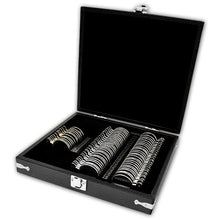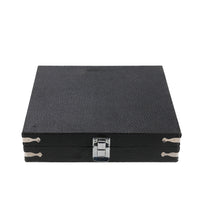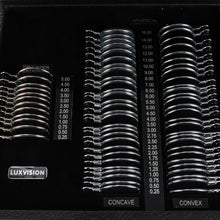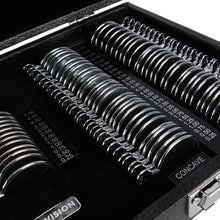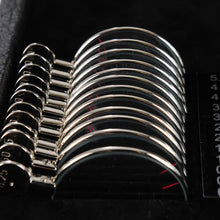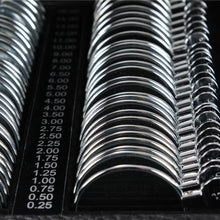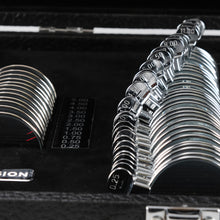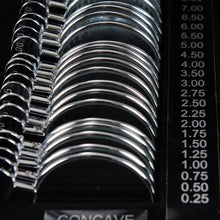Luxvision Cylinder Lens Set TL-68 (-) Cylinder
Appropriate lens power is essential when performing perimetry.
The Luxvision TL-68 (-) Cylinder Lens Kit offers 56 spherical lenses plus 12 minus cylinders to help you obtain reliable visual fields and artifact-free results. These full aperture designs are handcrafted with optically true centers. Each glass lens is encased in a metal ring and is offered in a leatherette case for safe, convenient storage.
* Trial Frame not Included
 |
Spheres The kit includes both concave (-) and convex (+) spherical lenses for performing testing on patients with myopia, hyperopia and presbyopia. Powers include ± 0.25D to ± 16.00D. |
|
 |
Cylinders Achieve the added flexibility you need when testing astigmatic patients. In addition to a spherical set, the Luxvision TL-68 (-) Cylinder lens kit offers 12 minus cylinders to help you obtain reliable visual fields and artifact-free results. Powers range from -0.25D to -5.00D. |
|
 |
Security Case The TL-68 (-) Cylinder Lens Set is offered in a leatherette case for safe, convenient storage. |
|

Click here to see the manual
Perimeter Trial Lens Set Selection
Spheres The curved surface forms a part of the spherical lens and the dioptric power on all axis positions is the same. After passing through the lens, the light beam focuses on one point (or a virtual focus). Spherical lenses includes concave lenses (-) and convex lenses (+), which are used to examine myopia, hyperopia and presbyopia. Cylinders The curved surface forms a part of the cylindrical lens and the dioptric power on all axis positions is not the same. After passing through the lens, the light beam focuses into a straight line (or a broken line). Cylindrical lenses consists of concave cylindrical lenses and convex cylindrical lenses that are used to examine astigmatism. |
Perimeter Trial Lens Set Selection
Spheres The curved surface forms a part of the spherical lens and the dioptric power on all axis positions is the same. After passing through the lens, the light beam focuses on one point (or a virtual focus). Spherical lenses includes concave lenses (-) and convex lenses (+), which are used to examine myopia, hyperopia and presbyopia. Cylinders The curved surface forms a part of the cylindrical lens and the dioptric power on all axis positions is not the same. After passing through the lens, the light beam focuses into a straight line (or a broken line). Cylindrical lenses consists of concave cylindrical lenses and convex cylindrical lenses that are used to examine astigmatism. |













